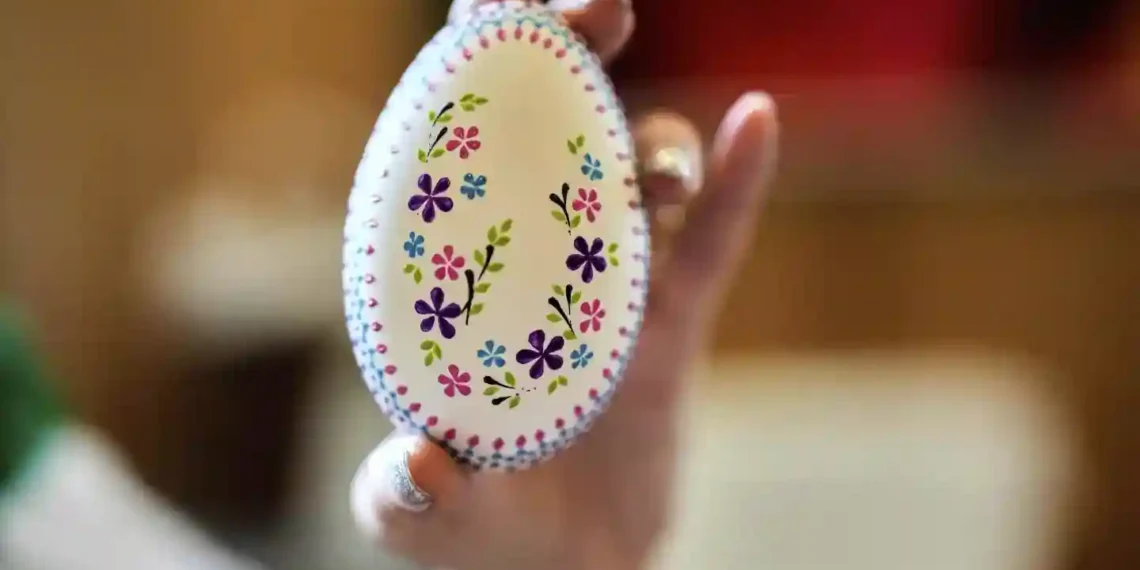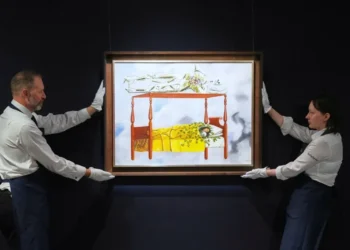Easter Eggs: A Timeless Sorbian Tradition Honoring Heritage and Craftsmanship
In a small town in eastern Germany, Anke Hanusch delicately dips her tool into dark blue wax, carefully dotting it onto a yellow-dyed Easter egg. Back and forth, wax to egg, egg to wax, as the intricate honeycomb pattern emerges. This is not just a simple decoration – it’s a symbol of tradition, a cherished practice passed down through generations of the Sorbian community.
The Sorbs, a Slavic-speaking ethnic group in Germany, have been decorating Easter eggs for over a thousand years. The eggs are more than just festive decor; they carry deep cultural significance. The honeycomb motif, for instance, is often used to create eggs that are given as gifts from godparents to their godchildren, symbolizing diligence and a strong work ethic.
The Sorbs, descendants of Slavic tribes who settled in Germany about 1,500 years ago, number around 60,000 today, primarily residing in the federal states of Saxony and Brandenburg. For this small but proud community, Easter is the most important holiday of the year.
“It’s a time when people travel home to be with family and celebrate together,” said Stephanie Bierholdt, an employee at the Sorbian Cultural Center in Schleife, a town located just 10 miles from the Polish border. “The best part is seeing that the tradition is still alive in families today.”
On April 6, ahead of the Easter holiday, Bierholdt, Hanusch, and other members of the Sorbian community gathered at the cultural center to celebrate their heritage. The event featured traditional Easter egg decorating, folk costumes, songs, and dances – all part of the rich Sorbian culture that dates back to the Middle Ages.
Hanusch, dressed in the red folk costume worn by unmarried Sorbian women, was among over 30 artisans selling their beautifully decorated Easter eggs. Prices ranged from 7 euros ($7.72) for a simple chicken egg to 90 euros ($99.28) for a painted emu egg. The decorating process is meticulous, with some designs taking up to six hours to complete.
The techniques used by the artisans are varied and intricate. Whether it’s using a needle or a goose feather quill to draw fine patterns, the level of detail is astonishing. While the global bird flu outbreak has led to higher egg prices and some shortages, the artisans note that their craft is still going strong, with many sourcing eggs directly from farmers rather than supermarkets.
Hanusch, who comes from a Sorbian family on her father’s side, has been decorating Easter eggs since she was just two years old. “When you can first hold a pencil, that’s when you start,” she said. Though many children only practice the craft during the Easter season, Hanusch continued through her childhood and eventually became a teacher, passing on the tradition to others, including her niece.
“I believe it’s a valuable cultural asset that needs to be preserved,” she added. “It would be a shame if this tradition were to fade away.”
The dedication of the Sorbian community to keeping their cultural practices alive is evident in their efforts to teach the next generation. Through the craft of Easter egg decorating, they honor their history, their language, and their identity. For Hanusch and many others, this tradition is not just about making beautiful eggs – it’s about ensuring that their culture continues to thrive for centuries to come.
As Easter approaches, the decorated eggs serve as a reminder of the timeless beauty and significance of the Sorbian community’s traditions, and the bond that ties generations together through a shared cultural heritage.
This article was rewritten by JournosNews.com based on verified reporting from trusted sources. The content has been independently reviewed, fact-checked, and edited for accuracy, neutrality, tone, and global readability in accordance with Google News and AdSense standards.
All opinions, quotes, or statements from contributors, experts, or sourced organizations do not necessarily reflect the views of JournosNews.com. JournosNews.com maintains full editorial independence from any external funders, sponsors, or organizations.
Stay informed with JournosNews.com — your trusted source for verified global reporting and in-depth analysis. Follow us on Google News, BlueSky, and X for real-time updates.














